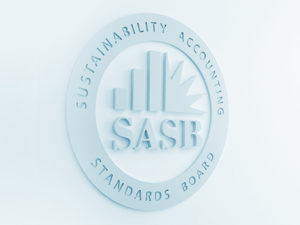Since Level I of the Fundamentals of Sustainability Accounting (FSA) Credential was launched in 2015, more than 2,200 professionals have pursued it to develop their understanding of the links between sustainability and financial performance. Grounded in the longstanding purpose and infrastructure of standardised accounting and reporting, sustainability accounting helps companies and investors gain a more complete picture of the factors that influence enterprise value. The FSA Level I thus helps professionals across capital markets – from asset owners and managers to corporate professionals and C-suite executives – speak a common language.
To enhance the curriculum’s ability to build this common language, we updated the FSA Level I to better reflect today’s ESG landscape and SASB’s role in it—both of which have evolved rapidly since the FSA Credential first hit the market. These updates can be categorised into three primary groups:
- More content on investor use of sustainability information: The new FSA Level I curriculum expands on the increasingly sophisticated use of ESG data in pre- and post-investment decision-making processes across asset classes and security types.Where the previous curriculum explored its application only to public equities, the Level I Study Guide now includes content on the use of financially material sustainability data in private equity and fixed income markets. It also provides a framework for rationalizing the ESG investing space by defining ESG-related investing strategies on a spectrum of “values” to “value.”
- More content on corporate use of sustainability information: Since the FSA was first launched, the number of companies reporting using SASB Standards has skyrocketed. The updated Level I curriculum has been expanded to include more detail on the use of the Standards for investor-focused reporting and internal performance management.The curriculum now includes examples of SASB disclosure to illustrate the range of ways companies choose to use the Standards. It also discusses the myriad ways investors ask for sustainability information and the influence of this demand on corporate reporting and performance management decisions. The content also expands corporate disclosure processes to include information on the application of financially material sustainability information to enterprise risk management (ERM).
- Content internationalization: The Level I content now better reflects the global application of SASB Standards. Companies around the world report using SASB Standards while navigating jurisdiction-specific guidance, voluntary reporting expectations, and regulatory disclosure obligations.The updated Level I curriculum thus elaborates on the definitions of materiality applied throughout the world. It lays out the key organisations in the global sustainability disclosure ecosystem that shape the supply and demand of sustainability information and describes recent steps these organisations have taken to work together toward a comprehensive system of global reporting.It also characterizes various types of regulatory disclosure guidance, allowing candidates to not only understand the nature and implications of existing guidance, but also a means to understand new guidance that regulators will inevitably publish in the future.
For more detail on the new FSA Level I Curriculum, download the FSA Level I Curriculum and Learning Objectives.
Details on the New FSA Level I Exam
The significant updates made to the FSA Level I Curriculum subsequently warrant an update to the Level I exam. Per credentialing best practice, SASB is developing the new exam with a cohort of about 30 subject matter experts (SMEs). This exam development process ensures that the new exam tests the competency of candidates based on the new curriculum and reflects the experience of professionals in this space.
For details about exam registration and timeline, download the Candidate Handbook and visit the registration page.

